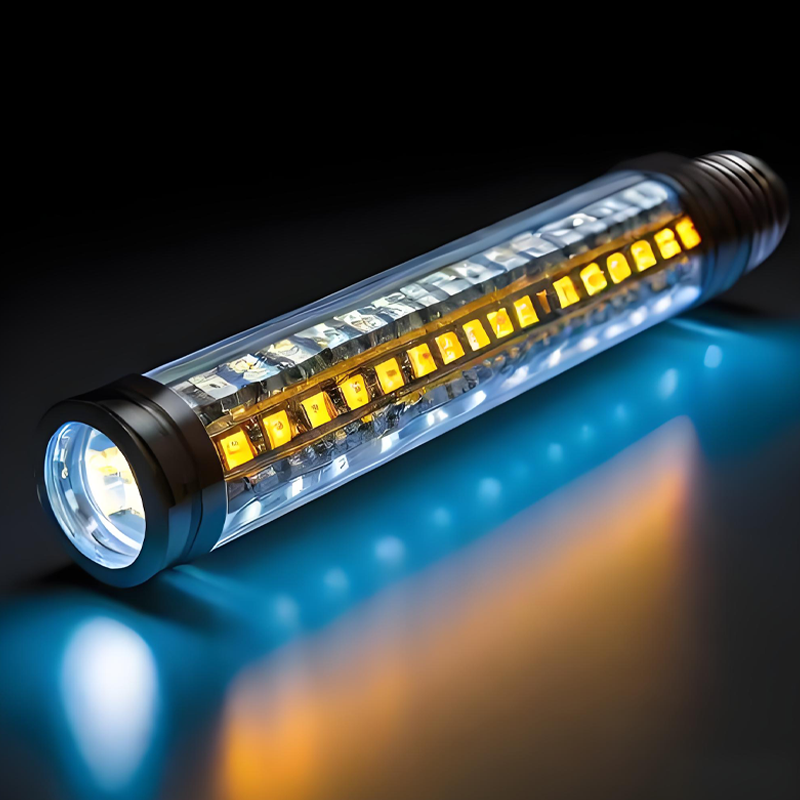With the wide application of LED lighting, more and more people are beginning to pay attention to the performance and service life of LED lamps. One overlooked but extremely important factor is Thermal Management. A good heat dissipation design not only ensures the stable operation of LED lamps but also directly affects their luminous efficiency and lifespan. This article will take you on a deep dive into the principles, significance and common heat dissipation technologies of LED heat dissipation.

Why do LED lamps need heat dissipation?
LED (Light Emitting Diode) is a semiconductor device that converts electrical energy into light energy when in operation, but it also generates a certain amount of heat. Although the heat generated by LEDs is much lower than that of traditional incandescent bulbs, they are highly sensitive to temperature.
If the operating temperature of the LED chip is too high, it is easy to cause:
Luminous efficiency decline: An increase in temperature will reduce the luminous efficiency of LEDs and decrease their light output.
Color temperature change: High temperatures may cause the color of the LED light to shift, affecting the lighting effect.
Shortened lifespan: Long-term high-temperature operation will accelerate the aging of LED chip materials and packaging, significantly reducing their service life.
Safety hazard: Overheating may cause damage to the lamps or even lead to safety accidents.
Therefore, controlling the operating temperature of LED lamps and keeping the chips within the ideal temperature range is the key to ensuring the performance and lifespan of LEDS.
The basic principle of heat dissipation
The essence of heat dissipation is to promptly and effectively conduct and release the heat generated by the LED chip into the environment, preventing the accumulation of heat inside the chip or the lamp. Heat dissipation mainly relies on three physical methods:
Conduction
Heat is transferred from the high-temperature area (LED chip) to the heat dissipation structure of the lamp, such as the heat sink or heat dissipation base.
Convection
The heat dissipation structure transfers heat to the surrounding air by coming into contact with it, and the air flow carries away the heat.
Radiation
The heat dissipation structure releases heat energy to the surrounding environment through infrared radiation.
Common LED heat dissipation designs and materials
To effectively dissipate heat, various heat dissipation structures and materials are usually adopted in the design of LED lamps:
Heat sink
It is usually made of aluminium or aluminium alloy, featuring excellent thermal conductivity and a large surface area. The fin design increases contact with air to enhance heat dissipation efficiency.
Heat dissipation base
It connects the chip and the heat sink, serving as a heat conduction bridge, and the material is mostly high thermal conductivity aluminum.
Thermal grease or thermal adhesive
It is used to fill the gap between the chip and the heat sink, reduce thermal resistance and improve thermal conduction efficiency.
Fan cooling
In high-power LED lamps, fans are used to force convection for heat dissipation, accelerating the dissipation of heat.
Heat pipe technology
Through the internal liquid evaporation and condensation cycle, heat is rapidly conducted and diffused, making it suitable for high-power LED applications.
Ceramic substrate
High thermal conductivity ceramic materials are adopted as the carrier substrate for LED chips to enhance thermal conduction performance.
The Importance of Heat Dissipation Design
Enhance light efficiency and stability
Good heat dissipation can keep the LED chip within the optimal operating temperature range, ensuring stable light efficiency and avoiding brightness attenuation.
Extend the service life
Effective heat dissipation can slow down the aging speed of chips, enabling the lifespan of LED lamps to reach the nominal time or even longer.
Ensure safety
Prevent lamps from being damaged due to overheating or causing safety issues such as fires.
Enhance user experience
Lamps with good heat dissipation generate less heat, have a comfortable touch and reduce discomfort during use.
The application of heat Dissipation in different LED lamps
Household low-power LED bulbs
The heat sink is designed simply and usually features an aluminum casing. Combined with good air circulation, it achieves natural heat dissipation.
Commercial and industrial high-power lamps
Large heat sinks, fans, or heat pipes are adopted to ensure the continuous and stable operation of high-power leds.
Automotive LED lighting
Due to the limited space and high heat dissipation requirements, ceramic substrates and heat pipe technology are commonly used in combination with air cooling for heat dissipation.
LED display screen
For high-density LED chip integration, heat dissipation design is particularly important, and air cooling or water cooling systems are usually adopted.
The application of heat Dissipation in different LED lamps
Household low-power LED bulbs
The heat sink is designed simply and usually features an aluminum casing. Combined with good air circulation, it achieves natural heat dissipation.
Commercial and industrial high-power lamps
Large heat sinks, fans or heat pipes are adopted to ensure the continuous and stable operation of high-power LEDs.
Automotive LED lighting
Due to the limited space and high heat dissipation requirements, ceramic substrates and heat pipe technology are commonly used in combination with air cooling for heat dissipation.
LED display screen
For high-density LED chip integration, heat dissipation design is particularly important, and air cooling or water cooling systems are usually adopted.
The development trend of future heat dissipation technology
With the continuous increase in LED power and the popularization of smart lighting, heat dissipation technology is also constantly advancing:
New type of high thermal conductivity material
The application of advanced materials such as graphene and carbon nanotubes is expected to significantly enhance heat dissipation efficiency.
Integrated heat dissipation design
The heat dissipation structure and the lamp housing are integrated in design to save space and enhance the aesthetic appeal.
Intelligent temperature control system
By integrating sensors and controllers, real-time temperature monitoring and heat dissipation regulation are achieved to ensure the best working condition of the LED.
Environmental protection and energy conservation
Adopt low-energy consumption heat dissipation solutions to reduce additional energy consumption and promote the development of green lighting.
Summary
Heat dissipation management, as a crucial aspect in the design of LED lamps, directly affects the performance and service life of the lamps. Through reasonable heat dissipation structure design and efficient application of heat dissipation materials, the temperature of the chip can be effectively reduced, the light efficiency and stability can be improved, and safety and reliability can be ensured. In the future, with the development of materials science and intelligent control technology, LED heat dissipation technology will become more efficient and intelligent, bringing us a better and more lasting lighting experience.




